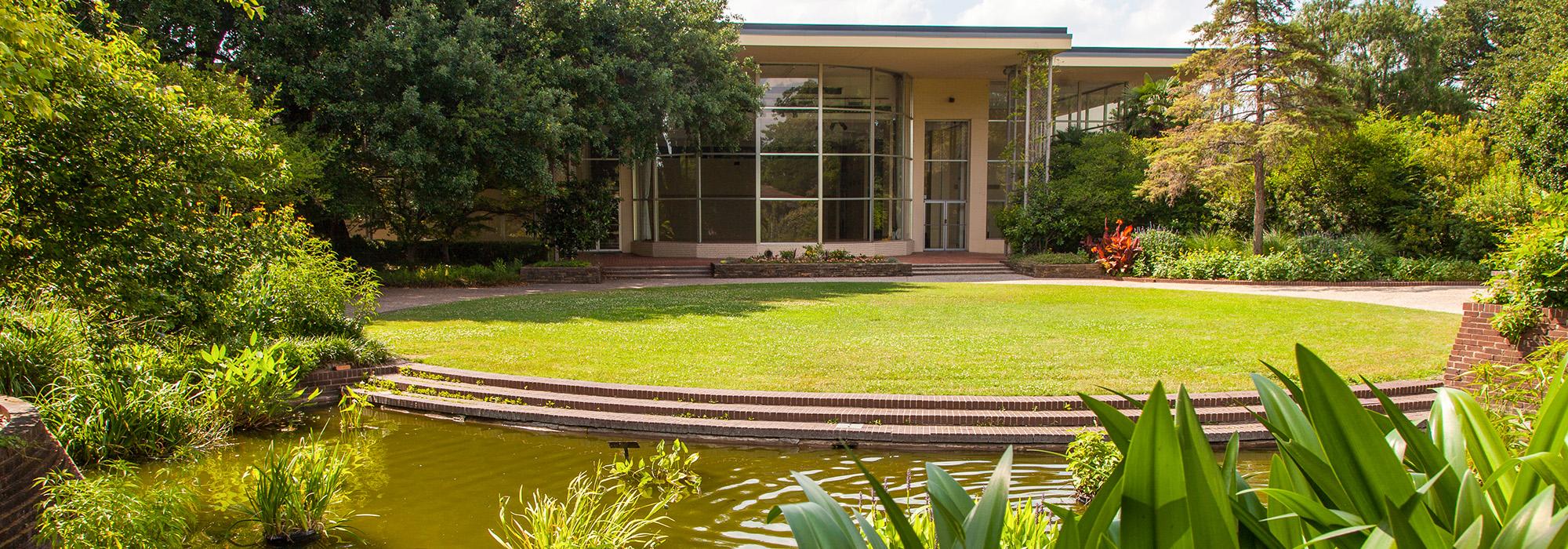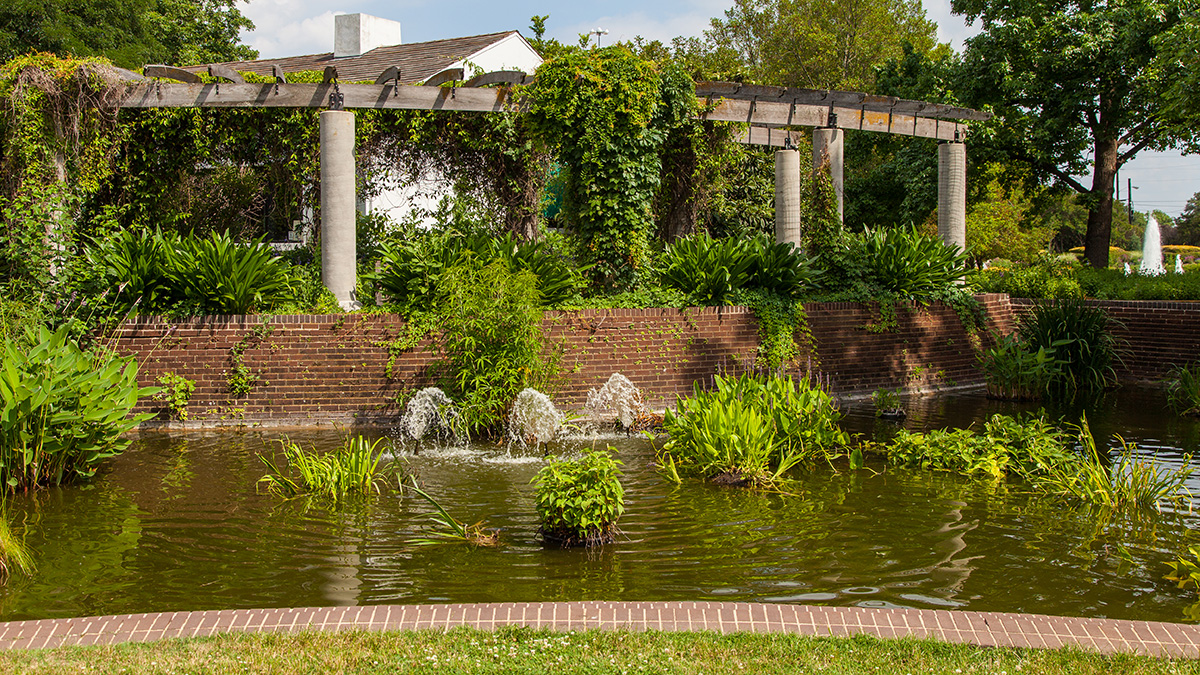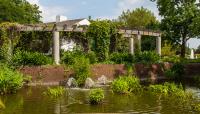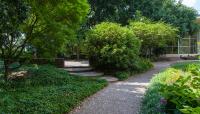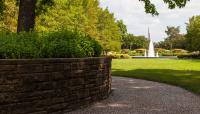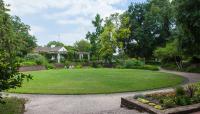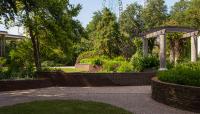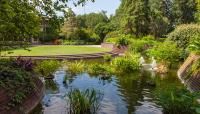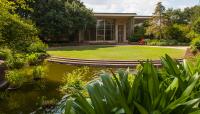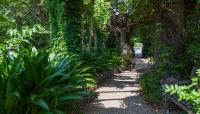Landscape Information
Located on the 277-acre Fair Park campus designed by George Kessler, this botanical garden features arid-adapted plants, ten themed gardens, and the repurposed Hall of Horticulture and conservatory built for the 1936 Texas Centennial Exposition. In 1938 the seven and half-acre southern-most parcel of Fair Park was named the Dallas Civic Garden Center and three years later Joe Lambert, Jr. began what would become a 20-year involvement with the institution. During this time Lambert produced city-wide garden shows and designed the centrally-located Circular Lawn, Leftwich Reflecting Pool, and the Callier Garden. In plan, reading as a series of overlapping arcs and circles, these cohesive elements are comprised of fountains, an expanse of lawn, and masses of flowering shrubs and trees. Providing contrast with the red brick walls lining the gravel pedestrian paths, Lambert emphasized the planting beds and lined the water features with alternating sections of roughly-hewn stone and a stepped retaining wall of burgundy-colored brick. In 1958 the Marianne Scruggs Garden Club designed a collection of herbs based on a British precedent. Thirty years later Dallas landscape architects Naud Burnett & Partners added to the design a formal allée of hollies interspersed with nectar-producing plants and terminating at a fountain. Fair Park was named a National Historic Landmark District in 1986.
In 1999, a master plan was completed by landscape architects Michael Kendall and Michael Parkey and a year later the Texas Discovery Gardens moniker was officially adopted. In 2008 the Hall of Horticulture was restored by Oglesby Greene, Architects and the conservatory was enlarged to be used as a butterfly house.



